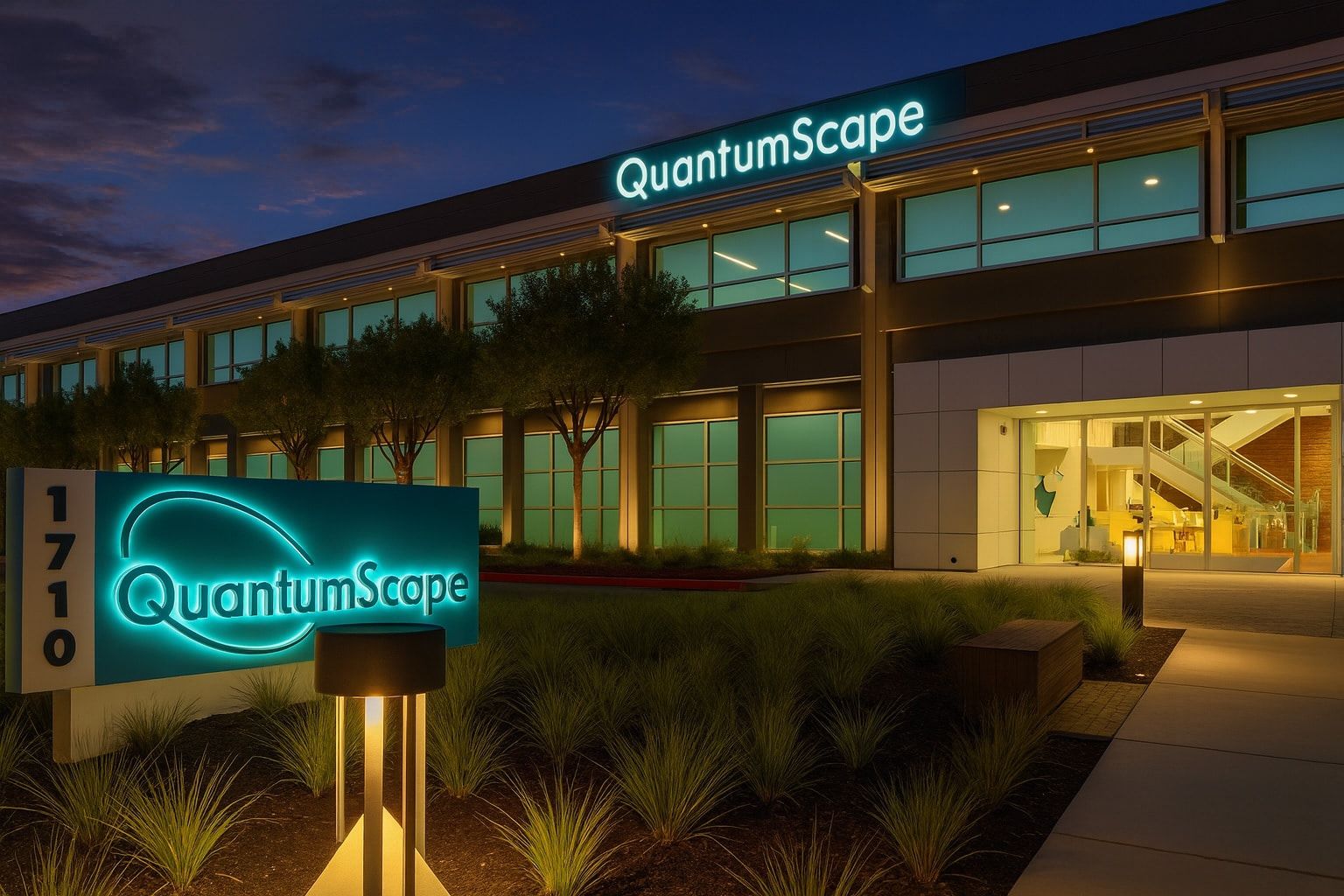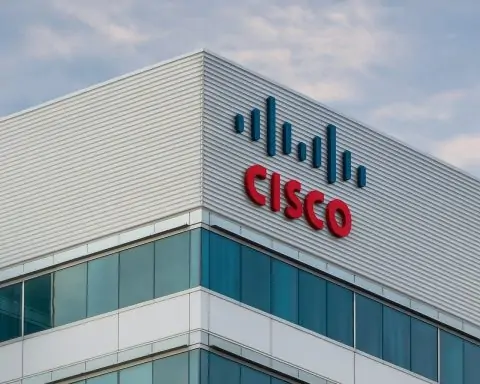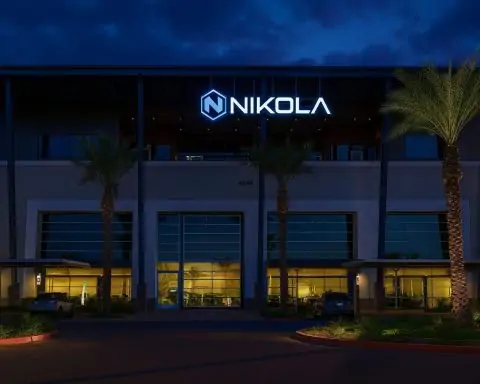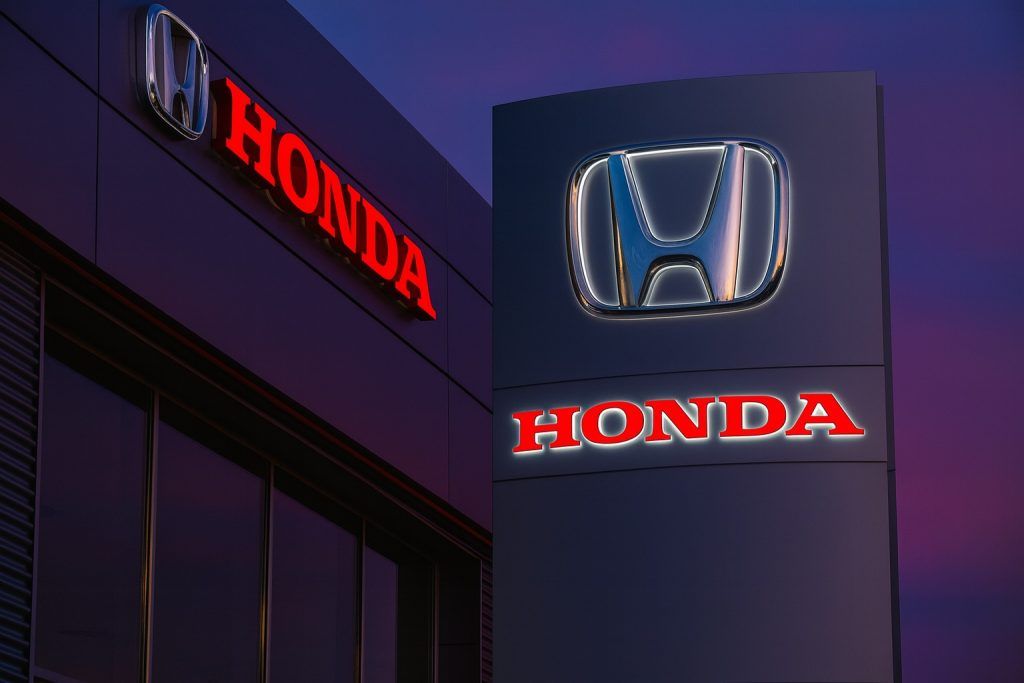- Current Price: QS trades near $16.8 as of Oct 27, 2025 [1], up roughly +180% year-to-date [2]. The stock hit a 52-week high near $19 in early October before recent pullbacks.
- Recent Volatility: After surging into earnings season, QS shares plunged ~12% intraday on Oct 22, 2025 (pre-earnings) [3] but rebounded sharply. On Oct 22’s after-hours trading (post-earnings), the stock jumped ~10% [4], and it gained another ~15% on Oct 23–24 [5].
- Q3 Earnings: For Q3 2025 (ended Sept 30), QuantumScape reported a GAAP net loss of $105.8M (–$0.18/share), slightly beating expectations of ~–$0.21 [6]. The company recorded its first-ever customer billings of $12.8M (up from $7.2M in Q2) [7]. Cash on hand stood at ~$1.08 billion (runway into 2030) [8].
- Breakthroughs: In October, QS began shipping its advanced “B1” QSE-5 solid-state cell samples (built with its new high-throughput Cobra separator process) [9]. These cells were used in VW/PowerCo’s demonstration of a Ducati motorcycle, showcasing ~844 Wh/L energy density and a 10%–80% charge in ~12 minutes [10]. This real-world demo underscores QS’s fast-charge, high-capacity promise.
- Partnerships: The company announced key supply-chain deals with Corning (Sept 30) and Murata (Oct 8) to co-develop ceramic separators [11]. Analysts hailed the Corning agreement as “a major vote of confidence” in QS’s technology [12]. VW Group’s PowerCo (which has invested >$300M in QS) remains a committed partner [13].
- Analyst Sentiment: Wall Street is divided. Most analysts rate QS as Hold/Sell, with a consensus 12-month price target of only $5–6 [14] (about 50–60% below current levels). By contrast, some bull-case analyses peg fair value near $25 [15]. One recent industry write-up even predicts QS will “soar over the next 3 years” if its solid-state technology proves out [16].
- Competitors: Other solid-state battery players (e.g. Solid Power (SLDP) and SES AI (SES)) are racing to catch up [17]. Legacy EV/battery firms (Toyota, Samsung/Sk On, Mercedes, etc.) also have development programs [18]. QS’s progress puts pressure on these peers and could reshape the EV battery landscape.
- Outlook: Short-term catalysts include further sample shipments (the next “A0” prototype cells), VW integration trials, and any new partnerships [19]. Long-term, success would hinge on ramping to commercial production (the “Eagle Line” pilot) and achieving cost parity – potentially revolutionizing EV range and energy storage [20].
With these milestones and risks in mind, investors and experts are closely watching QuantumScape’s next moves.
Stock Performance & Recent Trends
QuantumScape (NYSE: QS) has been one of 2025’s most volatile and high-flying stocks. After languishing in the $3–4 range earlier in the year, QS shares rallied nearly +180% YTD by mid-October [21]. Positive news – especially a September Ducati demo and new partner deals – propelled the stock to fresh highs. In early October it briefly traded around $16–19 [22].
However, ahead of Q3 earnings the stock pulled back. On Oct 22 (pre-earnings), QS plunged about –12.6% intraday [23], erasing roughly $2 billion of market cap. Traders attributed the decline to profit-taking and cautious positioning after a huge run-up. Indeed, TS2.tech notes that QS’s beta is above 4.0 – meaning it swings wildly with each news event [24].
Once actual results were announced after the market close on Oct 22, sentiment shifted. The solid earnings and B1-shipment news lifted the stock ~+10% in after-hours trading [25]. The optimism carried over: QS closed up substantially the next day and by the end of the week (Oct 24) it had gained another ~15% [26].
As of Oct 27 morning, QS was trading around $16.8 [27] (market was open). In intraday trading it’s been roughly range-bound between about $16.5 and $17.4 [28]. This is well above the year’s lows, but below the early-Oct peak. Overall, 2025’s ups and downs reflect extreme enthusiasm followed by jitters – a classic “roller-coaster” effect in a pre-revenue, high-promise story [29] [30].
Q3 Earnings & Financial Outlook
On Oct 22 after the market close, QuantumScape released its Q3 2025 results. Financially, the quarter continued to show progress without revenue (QS is still pre-product). The GAAP net loss was $105.8 million (–$0.18 per share), slightly better than the analyst forecast of about –$0.20–0.21 [31]. Operating expenses (R&D + G&A) were about $115M, reflecting heavy investment in development [32]. Capital expenditures were modest (~$9.6M, mainly for pilot line equipment) [33].
Perhaps most notable was QS’s use of a new non-GAAP metric: “customer billings.” In Q3 they recorded $12.8M of billings under partnership agreements, up from $7.2M in Q2 [34]. (These are not sales revenue – rather, they indicate partner payments for development work.) This surge in billings suggests growing engagement: CEO Siva Sivaram highlighted that the quarter’s achievements showed their “vision for commercialization… is beginning to take shape” [35]. In practical terms, QS is now shipping more advanced battery samples to partners, a key step toward future product sales.
By quarter’s end, QS had about $1.08 billion in cash (up from ~$790M at Q2’s end) [36]. The company raised significant funds via stock sales in Q3 (about $263.5M ATM program [37], diluting existing shares by ~15%). Even so, management says this extends the cash runway into 2029–2030 [38] [39]. For planning purposes, QuantumScape now emphasizes billings and adjusted EBITDA as near-term success metrics instead of a raw cash-runway figure [40].
Analyst reaction: Most analysts on earnings day sounded caution. Nearly all remain Neutral/Hold (or worse) on QS, citing its heavy losses and no end-product yet. MarketBeat reports 3 ‘Sell’ and 6 ‘Hold’ ratings among 9 analysts in the past year [41]. The average 12-month target is only $5–6 [42] – far below the ~$17 price. For example, even after Q3 Baird Capital only raised its target to $11 [43]. Wall Street’s consensus view is that QS’s multibillion-dollar market cap hinges entirely on future success.
However, the upside case is that the latest results justify more upside risk. The 18% narrower loss (–$0.18 vs –$0.22 last year’s Q3) and first billings are seen by bulls as de-risking the story. Tech commentators have noted that if QS can meet its goals on schedule, the stock’s upside could be much higher [44]. One analysis (Simply Wall St.) puts fair value near $25 in a best-case scenario [45]. In short, market sentiment is split: skeptics focus on cost and timing risks, while optimists highlight the technical progress and partnerships.
Technology Breakthroughs & Production
QuantumScape’s core value proposition is its next-generation solid-state lithium-metal battery. The idea is a thin ceramic separator and lithium-metal anode (no graphite) – enabling far higher energy density and much faster charging than today’s lithium-ion packs [46]. In 2025, QS achieved several headline-grabbing technical milestones:
- Cobra Process & B1 Samples: In Q3 QS completed integrating its new “Cobra” separator-manufacturing process into its cell production. On Oct 22 the company announced it has begun shipping “B1” samples of its QSE-5 solid-state cell [47]. These B1 cells use the Cobra process for the ceramic separator, promising much higher throughput. COO Luca Fasoli called this a “major step toward high-volume commercial production” [48]. The company plans to test these cells in prototypes over the coming months. If successful, the next batch (“A0” samples) will pave the way to pilot manufacturing on its new Eagle Line – an automated cell-production facility now being installed at its San Jose headquarters [49] [50].
- VW/Ducati Demonstration: One of the most tangible demos was at the IAA 2025 auto show in Germany. QuantumScape (with VW’s PowerCo and Ducati) ran a modified Ducati V21L race bike using QS’s solid-state QSE-5 cells [51]. The results were striking: the bike achieved around 844 Wh per liter energy density and charged from 10% to 80% in ~12 minutes [52]. This was the first live “anode-free” solid-state vehicle demo. Sivaram said the Ducati event “silenced some skeptics” by showing that the batteries can deliver “no-compromise performance” [53] [54].
- Railgun Separator Demo: Earlier in 2025, QS also showed a small cell achieving ~500 Wh/kg (by weight) at its labs [55] – another number well above typical lithium-ion (200–300 Wh/kg). The combination of these breakthroughs (high energy density plus ultra-fast charging) is at the heart of investors’ excitement.
These advances have practical aims. Solid-state packs could dramatically improve EV range and safety (no flammable liquid electrolyte). Industry-wide, companies like Toyota/Idemitsu and Samsung’s SK On are pursuing solid-state too. Toyota aims to have a solid-state EV around 2027–28, and SK On is building pilot plants targeting ~800 Wh/L cells by 2029 [56]. Mercedes-Benz recently demonstrated an EQS sedan with a solid-state pack reaching ~749 miles range [57]. In this context, QS’s early prototypes and partner demos give it a leading edge – but also pressure to prove it first.
Strategic Partnerships & Supply Chain
Realizing solid-state batteries at scale requires a broad ecosystem. QS has pursued this aggressively:
- Ceramic Separator Deals (Murata, Corning): The company announced two key collaborations in late 2025. On Sept. 30, it struck an agreement with Corning Inc. to jointly develop manufacturing for QS’s ceramic separators [58]. Corning’s ceramics expertise is expected to speed up industrial scaling. A few days later (Oct. 8), QS signed a framework agreement with Japan’s Murata Manufacturing for high-volume ceramic-film production [59]. Analysts view these deals as “major votes of confidence” in QS’s path: they bolster the supply chain needed to move from prototype to gigafactory.
- Volkswagen PowerCo (VW Group): VW’s battery subsidiary (PowerCo) has been a cornerstone partner since 2021. VW has invested over $300 million in QuantumScape [60]. The recent Ducati motorcycle demo and B1 cell shipments were developed under this JV. Volkswagen has even committed up to ~$131M in production milestones if QS meets deadlines [61]. In short, VW’s involvement (and funding) remains a powerful catalyst.
- Ducati Collaboration: Although part of the VW partnership, it’s worth noting Ducati specifically acted as a launch partner. Using a Ducati bike allowed a high-profile demonstration of QS’s cells in a premium performance application [62].
- Other Industry Ties: QS’s approach is to leverage external partners for manufacturing. Its CEO notes that Murata’s “deep expertise in high-precision ceramics” combines with QS’s Cobra process to “create significant value” [63]. Beyond those already mentioned, QS’s ecosystem includes battery equipment vendors and electronics manufacturers.
In summary, the recent string of partnerships – from materials to OEMs – has been credited with reducing technical risk. TS2 comments that an investor’s boost in optimism stemmed largely from these deals, as they show QS is “rapidly building a supply chain for commercialization” [64].
Analyst Commentary & Market Sentiment
Experts and analysts are divided on whether QuantumScape’s hype is justified. Here are key viewpoints:
- Skeptical Analysts: Most on Wall Street emphasize caution. MarketBeat data shows QS receives mostly Hold/Sell recommendations [65]. The consensus is that QS’s current ~$9 billion market cap hinges on execution years in the future. One market column bluntly asked if investors should “sell QS stock before earnings,” citing its lack of revenue and volatility [66]. The average 12-month target among analysts is only $5.88 [67] – well under half the recent price. Notably, even after the Q3 beat, Baird’s upgrade raised its target to just $11 [68]. In short, risk-averse pros argue the stock is “priced for perfection” and could fall if any milestone is delayed.
- Bullish Analysts: Conversely, some analysts and commentators argue QS still has plenty of upside. Tech investors point to the fundamentals: if solid-state cells meet targets (e.g. 500 Wh/kg, sub-15-minute charging), EV demand could explode. For example, financial media 24/7 Wall St. ran an analysis claiming QS will “soar over the next 3 years” on that basis [69]. Rating agencies like Credit Suisse and Morgan Stanley have also noted improved metrics: QS narrowed its 2025 EBITDA loss guidance and expects runway into the end of the decade.
- CFO/Management Tone: The company itself has shifted its narrative. In Q3’s call and filings, QS emphasized “billings and adjusted EBITDA” as progress markers [70]. They highlighted disciplined spending: Q3 opex ($115M) was down from prior quarters, and the expanded cash from equity raises gives more runway. Management noted that switching focus to billings (partner-derived income) better reflects early commercialization rather than counting that cash as a cost burn metric [71]. Analysts have reacted positively to this clearer financial messaging. GuruFocus notes that Wall Street “welcomed signs of tighter cost control and earlier billings,” suggesting the stock could trade up if QS executes as planned [72].
- Investor Base: Retail traders have certainly piled into QS – it was among the most-watched tech tickers in 2025. Major institutions have also increased stakes: for instance, Vanguard and UBS Asset Management boosted QS holdings significantly [73]. Yet some company insiders have sold shares (~2.3M shares in Q2) [74]. This mix of retail fervor, hedge fund interest, and insider selling underscores the uncertainty.
In summary, the commentary is split. Bears warn that QS’s lack of revenue and ambitious tech roadmap mean “it’s easy to get burned if a hurdle appears” [75]. Bulls counter that the company is finally delivering on promises: breakthroughs and partner trials were once years away, and now they’re happening. The stock’s wild swings after each update (–12% then +10% in Oct 22) vividly reflect this tug-of-war in sentiment [76].
Competitors & Industry Context
QuantumScape does not operate in a vacuum. The broader EV battery landscape is evolving:
- Other Solid-State Startups: Companies like Solid Power (SLDP) and SES AI (SES) are also developing solid-state cells. QS’s recent wins raise the bar for them. As one market report notes, “for direct competitors… such as Solid Power and SES AI, QuantumScape’s progress sets a high bar and intensifies the pressure to demonstrate comparable breakthroughs” [77]. SES AI (formerly SolidEnergy) has backing from Samsung, and Solid Power is partnered with Ford and BMW; both will be watching QS’s roll-out closely.
- Global OEM Programs: Major automakers are jockeying for battery supremacy. Toyota (backed by Panasonic and Idemitsu) plans a solid-state EV around 2027–28, and Mercedes-Benz has demonstrated long-range solid-state prototypes [78]. South Korea’s Samsung SDI and SK On are investing heavily in new cell plants. If QS can commercialize first, it could leapfrog these entrenched players. Conversely, QS’s success would push others to speed up – for example, Panasonic and LGES are known to be working on their own next-gen chemistries.
- Battery Supply Chains: Beyond cell companies, suppliers are paying attention. Solid-state designs require different materials (e.g. ceramic separators and lithium metal). Metals and materials firms are aligning with the winners. The QS-Corning and QS-Murata tie-ups we discussed exemplify how glass/ceramics and electronics suppliers are now partners in this race.
- Electric Vehicle Companies: EV makers stand to gain from any solid-state breakthrough. Tesla, GM, Ford, VW and others all want lighter, longer-range packs. In QS’s case, Volkswagen is the main customer so far. But a true solid-state advantage – 50–80% higher range, 5x faster charge – would be a game-changer industry-wide [79]. Even luxury players (like Audi/Ducati under VW) could charge a premium.
In general, QuantumScape is often compared to a “battery Tesla,” given its high risk/reward profile. Its stock performance (up ~180% YTD) has actually outpaced virtually all other EV and tech names in 2025 [80]. If its technology works at scale, QS could redefine the battery market. But if not, competitors like Toyota or even one of its startup peers could fill the gap.
Forward-Looking Analysis
Looking ahead, QS’s trajectory will hinge on execution of its roadmap: scaling production and securing customers.
- Short-Term (Next 6–12 Months): The immediate focus is on validating the B1 cells and moving to the next generation. Investors will watch for “A0” sample cells (the next design iteration) and any test results from VW/PowerCo’s vehicle programs [81]. Success in these trials could unlock milestone payments and more binding orders. On the financial side, Wall Street will scrutinize whether QS continues to narrow its losses and manage dilution (the recent ATM raised the share count by ~15%). Any signs of cost overruns or delays – for instance in outfitting the Eagle Line pilot facility – could deflate expectations. In the near term, one key metric will be whether QS can start showing recurring partner revenues (billings) beyond one-off grants. As one analyst put it, extending commercial partnerships and focusing on EBITDA could underpin a “constructive, though cautious, outlook” [82].
- Long-Term (3–5+ Years): If QS successfully ramps up, it could be transformative. Solid-state batteries with >800 Wh/L and fast charging could give EVs 50–80% more range and dramatically shorten charging stops [83]. QS’s own forecasts (subject to regulatory approvals) target producing cells by the mid-2020s. Beyond automotive, solid-state packs might find use in grid storage and aerospace. However, scaling from R&D to gigafactory is notoriously hard. Historically, battery pioneers (NiMH, Li-ion) took many years to dominate. The long-term stock forecast thus splits dramatically: bullish models assume QS will capture a large share of a multibillion-dollar market (implying stock multiples far above today); bears assume the tech timeline slips, keeping QS’s value near R&D levels.
So far, QS has delivered on some critical milestones (separator process, demo units, sample shipments) that justify cautious optimism. The stock’s short-term valuation will likely follow upcoming newsflow: new sample validations, VW pilot programs, or additional partner announcements could spark rallies. Conversely, any missed deadline or downgrade (e.g. an FDA-style safety setback or new competition) could trigger steep drops – as one Forbes article warned just before earnings [84].
In summary, QuantumScape’s case is a classic high-risk/high-reward trade. Its recent breakthroughs and partnerships have pushed the stock to new highs [85] [86]. If it can scale cost-effectively and enter production, Qtech’s promise could be realized and the stock could soar. If not, the company might need to resort to more rounds of financing or even licensing its tech – which analysts warn could pressure the valuation. As one tech writer concluded, the coming months will be critical: investors should track milestones like the A0 sample tests, the progress of the Eagle Line, and the VW Group’s vehicle integration timeline. These events will be the telltale signs of whether QuantumScape will stay the course or fizzle in the fierce race for the next-generation battery.
Sources: QuantumScape press releases and earnings reports [87] [88]; tech and market analysis (TechStock², GuruFocus, Reuters, Benzinga, Forbes) [89] [90] [91] [92]. All data and quotes are up to Oct. 27, 2025.
References
1. www.reuters.com, 2. ts2.tech, 3. ts2.tech, 4. ts2.tech, 5. www.gurufocus.com, 6. ts2.tech, 7. ts2.tech, 8. ts2.tech, 9. www.businesswire.com, 10. ts2.tech, 11. ts2.tech, 12. ts2.tech, 13. ts2.tech, 14. ts2.tech, 15. ts2.tech, 16. ts2.tech, 17. markets.financialcontent.com, 18. ts2.tech, 19. markets.financialcontent.com, 20. markets.financialcontent.com, 21. ts2.tech, 22. ts2.tech, 23. ts2.tech, 24. ts2.tech, 25. ts2.tech, 26. www.gurufocus.com, 27. www.reuters.com, 28. www.reuters.com, 29. ts2.tech, 30. ts2.tech, 31. ts2.tech, 32. ts2.tech, 33. ts2.tech, 34. ts2.tech, 35. ts2.tech, 36. ts2.tech, 37. www.gurufocus.com, 38. ts2.tech, 39. www.gurufocus.com, 40. www.gurufocus.com, 41. ts2.tech, 42. ts2.tech, 43. ts2.tech, 44. ts2.tech, 45. ts2.tech, 46. ts2.tech, 47. ts2.tech, 48. www.businesswire.com, 49. www.businesswire.com, 50. markets.financialcontent.com, 51. ts2.tech, 52. ts2.tech, 53. ts2.tech, 54. ts2.tech, 55. ts2.tech, 56. ts2.tech, 57. ts2.tech, 58. ts2.tech, 59. ts2.tech, 60. ts2.tech, 61. ts2.tech, 62. ts2.tech, 63. ir.quantumscape.com, 64. ts2.tech, 65. ts2.tech, 66. ts2.tech, 67. ts2.tech, 68. ts2.tech, 69. ts2.tech, 70. www.gurufocus.com, 71. www.gurufocus.com, 72. www.gurufocus.com, 73. ts2.tech, 74. ts2.tech, 75. ts2.tech, 76. ts2.tech, 77. markets.financialcontent.com, 78. ts2.tech, 79. markets.financialcontent.com, 80. ts2.tech, 81. markets.financialcontent.com, 82. www.gurufocus.com, 83. markets.financialcontent.com, 84. ts2.tech, 85. ts2.tech, 86. ts2.tech, 87. www.businesswire.com, 88. www.businesswire.com, 89. ts2.tech, 90. ts2.tech, 91. ts2.tech, 92. www.gurufocus.com







